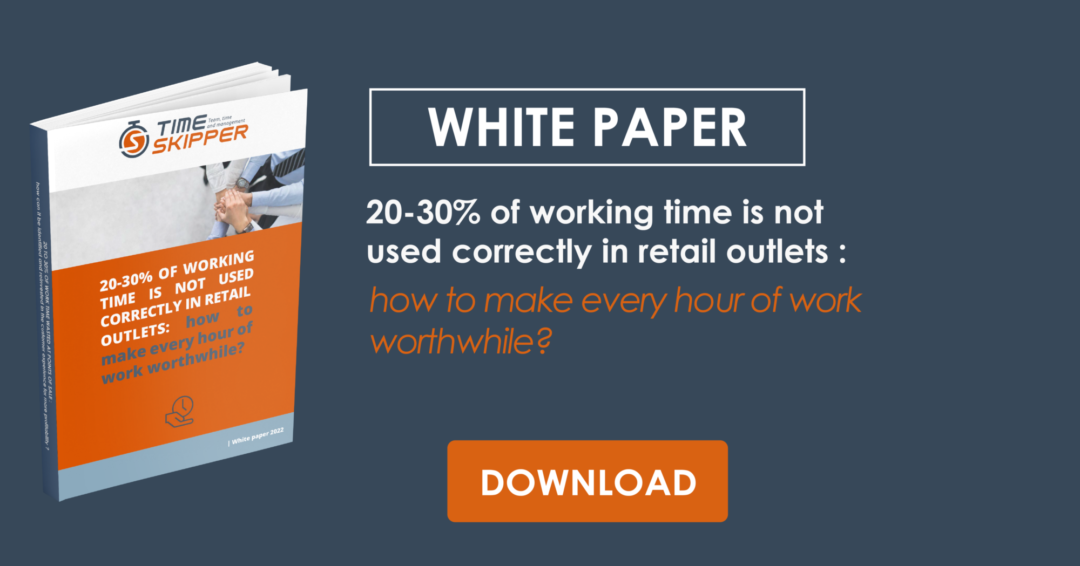Waiting at the checkout, lack of advice, out-of-stock situations, poorly maintained points of sale… Who hasn’t had to deal with one of these major in-store irritants, likely to sabotage a shopping experience, and even lead to lost sales? While these recurring points of friction are well known throughout the retail industry, the implementation of various solutions has never completely eliminated them, until activity management proved to be THE means of effectively remedying them. Here’s how it works.
1. Waiting at the checkout
Waiting time at the checkout is a key factor in customer dissatisfaction. Impatient and intolerant of the idea of “wasting time” in the store, consumers also have a singular and personal perception of waiting time: a line moving faster than their own? Infuriating! Product information requested over the microphone? Horrifying! Many checkouts are closed? Absolutely scandalous!
The cause was poor anticipation of traffic flows, and as a result, staff were busy with other tasks, unable to make themselves available to manage the influx.
To reduce waiting time at the checkout, there are a number of more or less costly solutions: single queuing, more efficient technological tools (self-service checkouts, latest-generation scanners, etc.), virtual queuing applications, etc. Among these tools, activity management software enables you to anticipate flows accurately, and modify staff schedules according to store activity requirements.
2. Out-of-stock items
Nothing is more irritating than going into a store and finding that the product you want is no longer available! As the main irritant in the customer journey, breakages affect 80% of French consumers. In 87% of cases, consumers complain of a lack of information concerning the unavailability of the product they are looking for, and its possible restocking date. In 91% of cases, they deplore the absence of a substitute product.
Stock discrepancies between information systems and the reality on the ground, slowness in internal supply processing, or even a sudden rise in demand, lead straight to stock-outs. Building up safety stocks, combined with transparent communication to consumers, can provide an alternative and ease frustration. That said, if you manage your business with specialized software, inventory can be managed in real time. An invaluable asset that helps you gain in precision and profitability.
3. Unkempt shelves
Untidy products, questionably clean shelves, a general feeling of disorder… Even the most loyal customers can be put off by a poorly-kept store.
Far from betraying ill will, a poorly run store is the result of chaotic management of team schedules, leading to a lack of overall coordination, and a haphazard response to the “highest priority” tasks.
The cleanliness of the sales area and the legibility of the product range are prerequisites for a successful consumer experience. Being able to assign the right staff to these tasks, in the right place and at the right time, is imperative. It may be an individual busy with less value-added tasks, or another whose schedule reveals free time during working hours. Activity management enables us to identify these poorly used times, and to allocate them more effectively.
4. Lack of advice
At a time of online shopping, home delivery and the success of the drive-thru, it has become essential to offer a “plus” to those who make the trip to the store. And that something extra is the ability to welcome, inform in an informed way, advise with professionalism, guide effectively… at any time. But the reality is often different…
In addition to a lack of availability, due to over-simplistic schedule management, sales staff are sometimes assigned to tasks that do not take their expertise into account. With advice failing to live up to customer expectations, friction is either latent or proven.
The speed of service and the quality of expert advice from a person skilled in his or her field, not only predisposes to a higher shopping basket, but is also a guarantee of customer loyalty. In this respect, the use of management software enables individuals to be automatically assigned to high value-added tasks, according to their specific characteristics and skills.
5. Approximate beaconing
Starting from the premise that customers are in a hurry, they need to be able to find their way around the store immediately. Battling to find a product or a price runs the risk of seeing the shopping session cut short and the basket reduced.
This can be blamed on a certain carelessness, but above all on a lack of hindsight and hourly investment in this task.
To facilitate the customer’s shopping experience and encourage sales, a multitude of shelf markers are available: shelf dividers, stop-rays, pediments, kakemonos, etc. However, their installation represents a relatively high hourly investment. The activity management tool has the advantage of highlighting hours that could be allocated to marking, without disrupting the overall organization. We’re talking here about misused time, which could be reallocated to this task and improve the customer experience.
It is estimated that, on average, 20 to 30% of hours could be better utilized in sales outlets. Activity management software such as TimeSkipper, which is based on real data, enables us to assess the workload of each employee and identify hours that are poorly used. These hours can then be reallocated to strategic tasks, which help to eliminate customer irritation. Checkouts are smoother, waiting times are reduced, and the store can be better maintained to guarantee a quality customer experience.
This SaaS-based platform, equipped with a predictive algorithm and Artificial Intelligence, provides previously unavailable information, refining activity forecasts as it is used, as well as the resources to be mobilized to meet and even exceed the expected customer experience. In short, Timeskipper is a catalyst for a successful customer experience!


